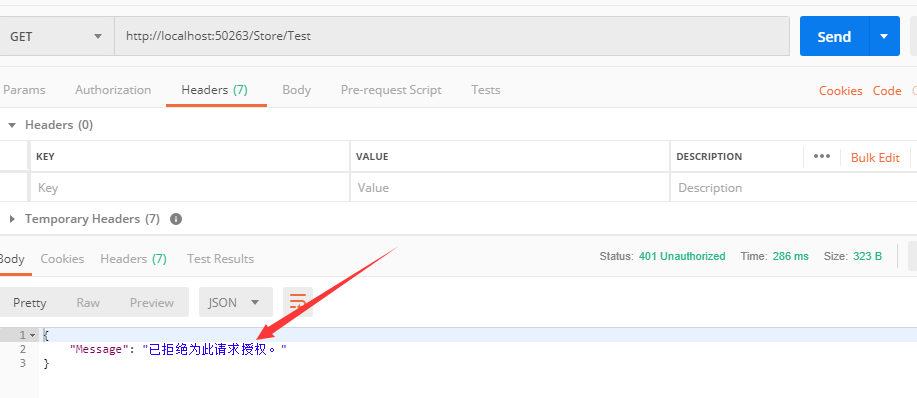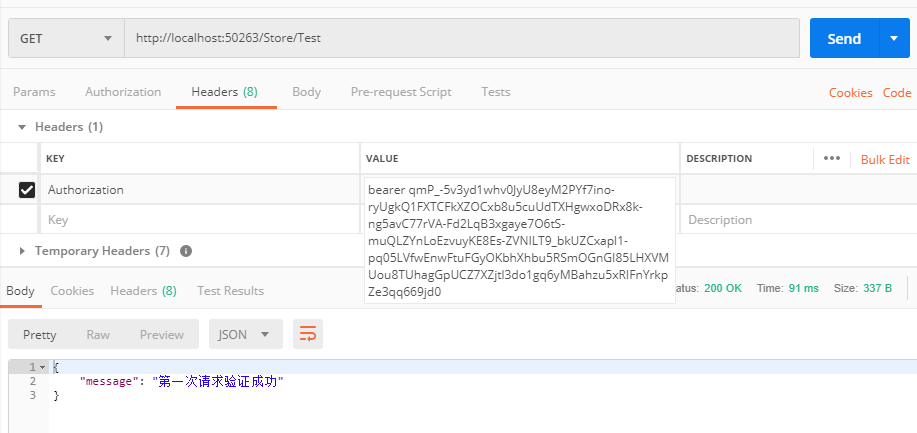.NET 请求认证之access-token(oauth2.0与owin的结合)
公司对外开放的接口,大多需要请求认证,如微信,阿里等。最近我刚好在搭建webapi框架。记录一下自己的理解。
一:请求认证的目的
之所以要对我们的接口进行请求认证,就是为了安全考虑的。以前都是在用别人给我的规则去生成token,现在也轮到自己开发了。嘿嘿
二:开发思路
1:请求接口之前,用户必须先去请求获得我们的access-token。每次请求必须得带上access-token来请求我的接口。否则我们会拒绝外部请求。
2:access-token有时间的限制,过期的请求我们依然会拒绝。
3:对不同的外部者,应有不同的clientID。以便分配不同的权限。以后不合作了,我们可以取消他们的认证,并不会影响其他的客户。类似于微信的 Appid,Appsecret
三:创建Access-Token
在api项目里token验证发生在进入接口之前,需要有一个启动文件来执行token的判断。在API项目下创建Startup.cs类。
我们需要在Nuget引用以下DLL:
- Microsoft.Owin.Security.OAuth
- Microsoft.Owin.Security
- Microsoft.Owin
- Microsoft.Owin.Host.SystemWeb
- OWIN
- Microsoft ASP.Net Web API 2.2 OWIN
- Microsoft ASP.Net Identity OWIN
using System; using System.Collections.Generic; using System.Linq; using System.Web.Http; using Bn.Common; using Microsoft.Owin; using Microsoft.Owin.Cors; using Microsoft.Owin.Security; using Microsoft.Owin.Security.OAuth; using Owin; [assembly: OwinStartup(typeof(BnWebApi.Startup))] namespace BnWebApi { /// <summary> /// wuchen19-4-15 /// </summary> public partial class Startup { //public void Configuration(IAppBuilder app) //{ // ConfigureAuth(app); //} public void Configuration(IAppBuilder app) { HttpConfiguration config = new HttpConfiguration(); WebApiConfig.Register(config); ConfigureOAuth(app); app.UseCors(CorsOptions.AllowAll); app.UseWebApi(config); } public void ConfigureOAuth(IAppBuilder app) { var OAuthServerOptions = new OAuthAuthorizationServerOptions() { AllowInsecureHttp = true, //允许客户端使用Http协议请求 TokenEndpointPath = new PathString("/token"), //请求地址 //AccessTokenExpireTimeSpan = TimeSpan.FromDays(1), //token过期时间 AccessTokenExpireTimeSpan = TimeSpan.FromHours(1), Provider = new SimpleAuthorizationServerProvider(),//提供认证策略 RefreshTokenProvider = new SimpleRefreshTokenProvider() //refresh_token 授权服务 }; app.UseOAuthAuthorizationServer(OAuthServerOptions); app.UseOAuthBearerAuthentication(new OAuthBearerAuthenticationOptions()); } } }
这个SimpleRefreshTokenProvider()方法就是我们验证Client信息和生成Token的地方
using System; using System.Collections.Generic; using System.Linq; using System.Security.Claims; using System.Text; using System.Threading.Tasks; using Microsoft.Owin.Security; using Microsoft.Owin.Security.OAuth; using System.Configuration; namespace Bn.Common { /// <summary> /// Token验证 wuchen 5-17 /// </summary> public class SimpleAuthorizationServerProvider : OAuthAuthorizationServerProvider { #region AccessToken生成机制 密码模式 ////Oauth AccessToken grant_type=password //public override async Task ValidateClientAuthentication(OAuthValidateClientAuthenticationContext context) //{ // await Task.Factory.StartNew(() => context.Validated()); //} //public override async Task GrantResourceOwnerCredentials(OAuthGrantResourceOwnerCredentialsContext context) //{ // await Task.Factory.StartNew(() => context.OwinContext.Response.Headers.Add("Access-Control-Allow-Origin", new[] { "*" })); // var identity = new ClaimsIdentity(context.Options.AuthenticationType); // var bnauth = ConfigurationManager.AppSettings["Oauth"]; //BnUser-123456 // var bnstr = bnauth.Split('-'); // var bnuser = bnstr[0]; // var bnpassword = bnstr[1]; // if (context.UserName != bnuser || context.Password != bnpassword) // { // context.SetError("invalid_client", "账号密码认证失败"); // return; // } // identity.AddClaim(new Claim("sub", context.UserName)); // identity.AddClaim(new Claim("role", "user")); // context.Validated(identity); //} #endregion #region AccessToken生成机制 客户端模式 // grant_type= client_credentials public override async Task ValidateClientAuthentication(OAuthValidateClientAuthenticationContext context) { string clientId; string clientSecret; context.TryGetFormCredentials(out clientId, out clientSecret); //验证 //var bnauth = ConfigurationManager.AppSettings["Oauth"]; //BnUser-123456 //var bnstr = bnauth.Split('-'); //var bnuser = bnstr[0]; //var bnpassword = bnstr[1]; //if (clientId != bnuser || clientSecret != bnpassword) //{ // context.SetError("invalid_client", "账号密码认证失败"); // return; //} var gkey = ConfigurationManager.AppSettings[clientId]; //BnUser-123456 if (clientSecret != gkey) { context.SetError("invalid_client", "账号密码认证失败"); return; } context.OwinContext.Set("as:client_id", clientId); await Task.Factory.StartNew(() => context.Validated(clientId)); //context.Validated(clientId); } /// <summary> /// 客户端授权[生成access token] /// </summary> /// <param name="context"></param> /// <returns></returns> public override Task GrantClientCredentials(OAuthGrantClientCredentialsContext context) { var oAuthIdentity = new ClaimsIdentity(context.Options.AuthenticationType); oAuthIdentity.AddClaim(new Claim(ClaimTypes.Name, context.OwinContext.Get<string>("as:client_id"))); var ticket = new AuthenticationTicket(oAuthIdentity, new AuthenticationProperties { AllowRefresh = true }); context.Validated(ticket); return base.GrantClientCredentials(context); } #endregion } }
两种模式都是可以用的。。密码模式和客户端模式。GrantClientCredentials方法为我们生成Token的方法。。有了这些我们就可以生成token啦。
Oauth支持的5类 grant_type 及说明(
authorization_code — 授权码模式(即先登录获取code,再获取token)
password — 密码模式(将用户名,密码传过去,直接获取token)
client_credentials — 客户端模式(无用户,用户向客户端注册,然后客户端以自己的名义向’服务端’获取资源)
implicit — 简化模式(在redirect_uri 的Hash传递token; Auth客户端运行在浏览器中,如JS,Flash)
refresh_token — 刷新access_token)
四:获取Token
输入参数:grant_type:验证模式 , client_id :服务端定义 , client_secret:秘钥 服务端和客户端共同保存 类似于微信的Appsecrret
生成项目,然后本地用Postman调试

返回的参数分别是:access_token:我们需要的token token_type :bearer (协议固定) expires_in:有效期(可以自定义) refresh_token:token重新过期后,重新获取token用到(暂时没用)
五:使用access_token访问接口路由
在Webapi中 ,我们用在方法加上 Authorize ,来表示这个方法访问需要授权, 如果不加Authorize ,那么token就没有意义。。 如下

我们不带token访问一下看看:

显示已拒绝我们的请求授权。
加了access-Token之后,注意token放的位置,在请求头Headers里 添加 Authorization:bearer token。 bearer与token之间有一个空格

验证的过程,是在我们Oauth2.0封装起来啦,可以查看。
到这里,用Oauth2.0加Owin的Webapi请求验证--accesstoken完成。。基本每一步都有注释,很好理解
简单的两句代码,双倍的快乐

